The Light-mantled Albatross, Phoebetria palpebrata, is a majestic seabird known for its elegant flight and striking appearance.
With a wingspan of up to 220 centimeters, it glides effortlessly over the Southern Ocean, covering vast distances in search of food.
These albatrosses form long-term pair bonds and nest in colonies on remote subantarctic and Antarctic islands.
Their breeding habits, monogamous relationships, and social behaviors make them a fascinating subject of study.
Despite their beauty, Light-mantled Albatrosses face threats from habitat destruction, climate change, and fisheries bycatch, highlighting the importance of conservation efforts to protect this iconic species and its fragile marine environment. Stay focused.
Physical Characteristics of Light-mantled Albatross
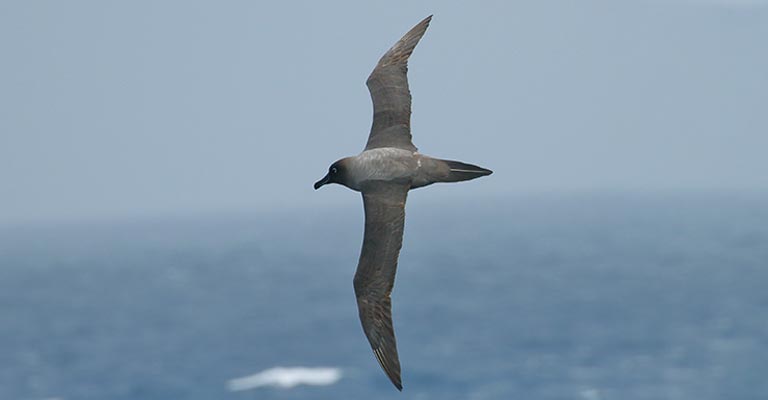
The Light-mantled Albatross (Phoebetria palpebrata) is a distinctive seabird known for its elegant appearance and remarkable flying abilities. Here are some of the fundamental physical characteristics that can help identify this species:
Body Size and Shape
Light-mantled Albatrosses are medium-sized seabirds with a wingspan ranging from 200 to 220 centimeters (around 6.5 to 7.2 feet).
They have a streamlined body shape, typical of albatross species, enabling them to glide effortlessly over the ocean for long distances.
Feathers and Plumage
The plumage of the Light-mantled Albatross is predominantly blackish-brown on the upperparts, while the underparts are primarily white.
However, what distinguishes this species is the presence of a distinctive “light mantle” of pale feathers across the upper back and shoulders, extending to the sides of the neck.
This light mantle gives the bird its name and is a key identifying feature.
Facial Characteristics
The face of the Light-mantled Albatross is marked by a dark eye patch, which contrasts with the pale feathers surrounding it. Additionally, the bill is long, slender, and predominantly yellow, with a dark tip.
Wing Pattern
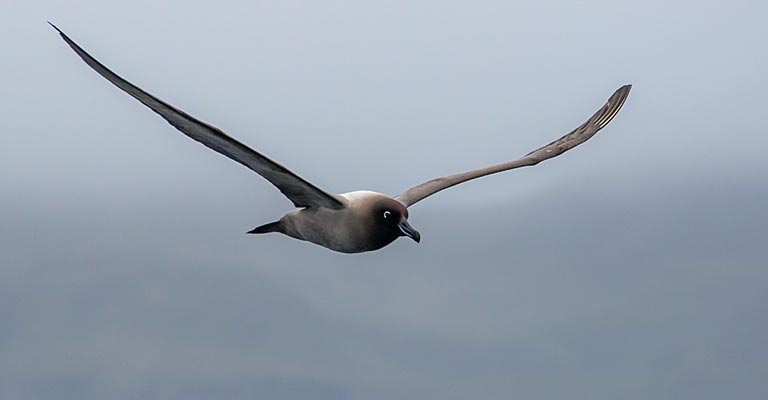
In flight, the Light-mantled Albatross displays a unique wing pattern characterized by dark outer wings and a white leading edge.
This contrasting pattern is particularly noticeable against the backdrop of the ocean, aiding in visual identification.
Flight Behavior
Light-mantled Albatrosses are renowned for their graceful flight, which involves soaring and gliding effortlessly over the waves.
Their long and narrow wings have a distinctive dihedral angle, giving them excellent aerodynamic efficiency.
Tail Characteristics
The tail of the Light-mantled Albatross is relatively long and narrow, with pointed tips. It may appear slightly forked in flight, distinguishing it from other albatross species.
Size Compared to Other Albatrosses
While the Light-mantled Albatross shares similarities with other albatross species regarding body shape and flight behavior, its size and distinct plumage features set it apart.
Compared to larger species like the Wandering Albatross, it appears more compact and has a different coloration pattern.
Habitat and Range
Light-mantled Albatrosses are primarily found in the Southern Ocean, particularly around subantarctic and Antarctic waters.
They breed on remote islands such as South Georgia, Crozet, and the Falklands, nesting in colonies on cliffs or tussock grass slopes.
The Light-mantled Albatross can be identified by its medium size, distinctive plumage featuring a light mantle, facial markings, unique wing pattern, graceful flight behavior, tail characteristics, relative size compared to other albatross species, and its habitat preferences in the Southern Ocean.
These combined features make it a fascinating and recognizable seabird in its natural environment.
Taxonomy of Light-mantled Albatross
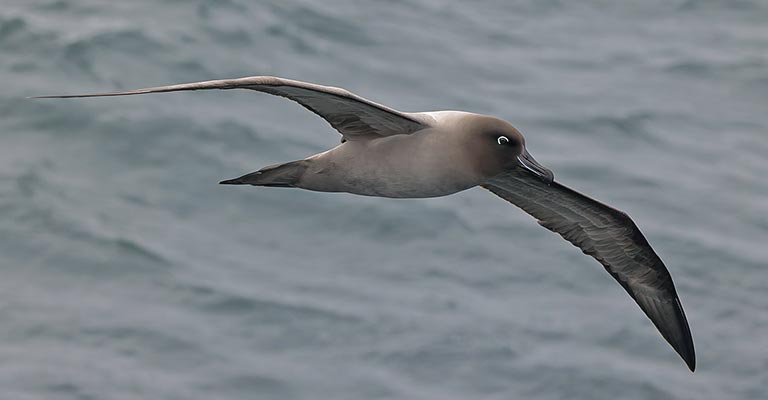
Go through the table below detailing the taxonomy of the Light-mantled Albatross:
| Taxonomic Rank | Classification |
| Domain | Eukaryota |
| Kingdom | Animalia |
| Phylum | Chordata |
| Class | Aves |
| Order | Phaethontiformes |
| Family | Diomedeidae |
| Genus | Phoebetria |
| Species | P. palpebrata |
The Light-mantled Albatross (Phoebetria palpebrata) belongs to the family Diomedeidae, which encompasses the albatrosses. It is classified under the genus Phoebetria and one other species, the Sooty Albatross.
Within the order Procellariiformes, albatrosses are further grouped into the suborder Diomedeidae alongside the more giant petrels.
Taxonomically, the Light-mantled Albatross is a class Aves (birds) member, part of the larger phylum Chordata.
These birds are characterized by their long wingspan, streamlined bodies, and highly adapted flight capabilities, which enable them to glide effortlessly over the ocean for long distances.
Reproduction of Light-mantled Albatross
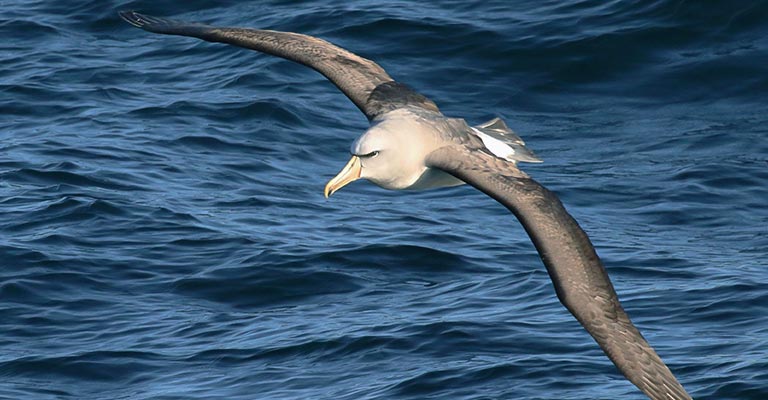
The Light-mantled Albatross follows a monogamous breeding system, forming long-term pair bonds.
Breeding colonies are established on remote subantarctic and Antarctic islands. Mating typically occurs annually, with pairs engaging in elaborate courtship displays involving synchronized dancing and vocalizations.
Once paired, they select a nest site on cliffs or tussock grass slopes. Females lay a single egg, which both parents take turns incubating for approximately two months.
After hatching, the chick is cared for and fed by both parents, primarily through regurgitation of food. Fledging occurs after around six months when the chick develops flight feathers and gradually learns to fly.
Light-mantled Albatrosses reach sexual maturity at around 6 to 10 years of age and may return to their natal colonies to breed.
Light-mantled Albatross Life History
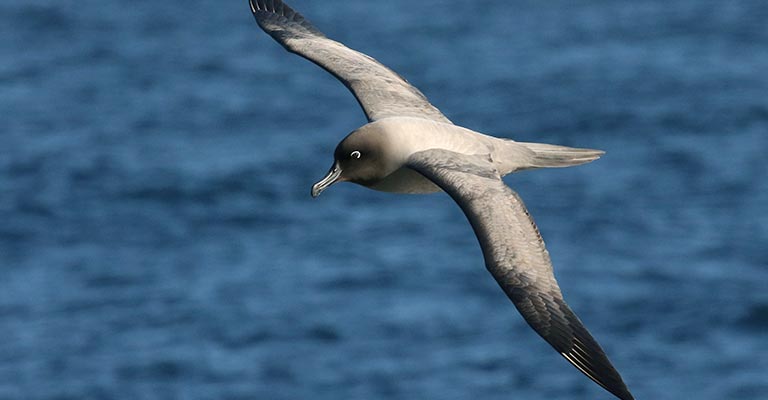
The Light-mantled Albatross (Phoebetria palpebrata) is a captivating seabird with a fascinating history.
From its foraging habits to nesting behaviors and conservation status, various aspects contribute to understanding this species comprehensively.
Food
Light-mantled Albatrosses are skilled predators, primarily feeding on a diet of fish, squid, and crustaceans. They employ various foraging techniques to capture their food, including surface-seizing prey and plunge-diving.
Their highly efficient digestive system allows them to extract maximum nutrition from their prey, enabling them to sustain their energy demands during long-distance flights.
Habitat and Range Map
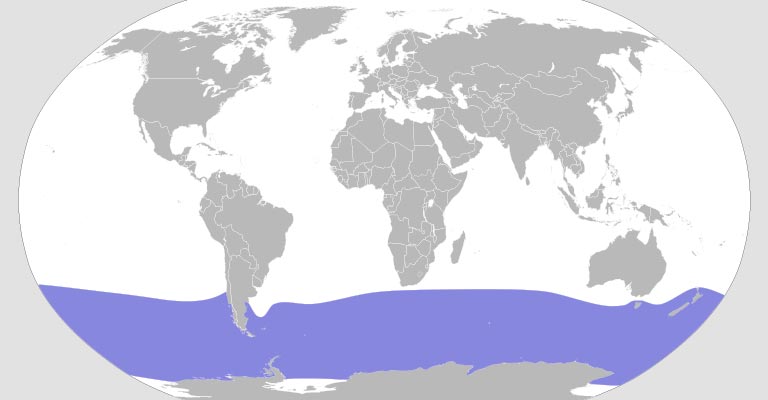
These albatrosses inhabit the vast expanse of the Southern Ocean, with breeding colonies located on remote subantarctic and Antarctic islands.
Their range extends across the Southern Hemisphere, encompassing South Georgia, Crozet, and the Falklands. A range map would depict their distribution, highlighting critical breeding and foraging grounds.
Nesting
Breeding colonies of Light-mantled Albatrosses are established on cliffs or tussock grass slopes, protecting from predators.
Pairs form long-term bonds and engage in elaborate courtship displays before selecting a nest site.
Females lay a single egg, which both parents incubate for approximately two months. After hatching, the chick is cared for and fed by both parents until it fledges.
Diseases and Treatment
Like many seabirds, Light-mantled Albatrosses face disease threats, including avian pox and aspergillosis.
Avian pox can manifest as skin lesions, affecting the bird’s ability to forage and care for its young. Aspergillosis, a fungal infection, can lead to respiratory issues.
Treatment typically involves supportive care, including antibiotics for bacterial infections and antifungal medications for fungal diseases.
Conservation
Light-mantled Albatrosses are vulnerable to various threats, including habitat destruction, climate change, fisheries bycatch, and pollution.
Conservation efforts focus on mitigating these threats by establishing marine protected areas, reducing plastic pollution, and promoting sustainable fishing practices.
Long-term monitoring and research are essential for understanding population trends and implementing effective conservation strategies to ensure the survival of this iconic seabird species.
Nesting Habit of Light-mantled Albatross
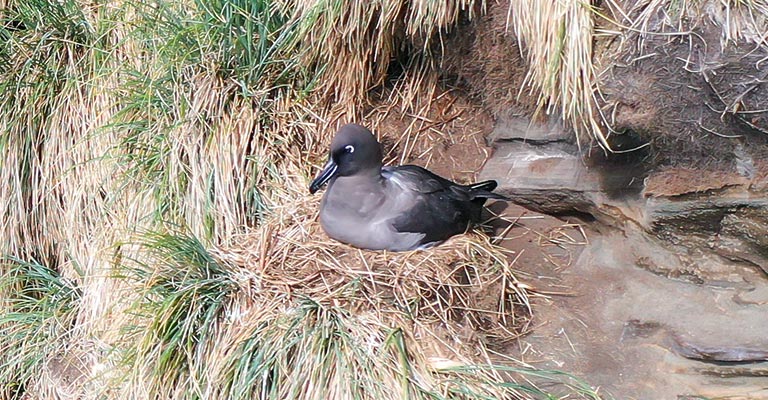
Check out the table below detailing the nesting habits of the Light-mantled Albatross:
| Nesting Details | Facts |
| Clutch Size | Usually 1 egg |
| Number of Broods | Typically 1 per breeding season |
| Egg Length | Approximately 100-115 mm |
| Egg Width | Approximately 65-75 mm |
| Incubation Period | Around 2 months |
| Nestling Period | Approximately 6 months |
| Egg Description | Creamy-white with some spotting or markings |
| Nest Type | Both parents take turns incubating the egg, alternating shifts every few days. |
| Incubation Behavior | Pairs engage in elaborate courtship displays before selecting a nest site, often returning to the same site annually. |
| Nesting Site Selection | Both parents participate in feeding and caring for the chick, regurgitating food for the nestling. |
| Chick Rearing | Chicks fledge after around six months, gradually learning to fly and becoming independent |
| Fledging | Chicks fledge after around six months, gradually learning to fly and becoming independent. |
This table provides a comprehensive overview of the nesting behavior and characteristics of the Light-mantled Albatross, highlighting key aspects such as clutch size, incubation period, nest type, and chick-rearing practices.
Light-mantled Albatrosses typically nest in colonies on remote subantarctic and Antarctic islands.
They form long-term pair bonds and select nest sites on cliffs or tussock grass slopes. Pairs lay a single creamy-white egg per breeding season, which both parents take turns incubating for around two months.
After hatching, the chick is cared for and fed by both parents for approximately six months until it fledges. Nesting sites are often reused annually, with pairs engaging in elaborate courtship displays before selecting a site.
This nesting strategy ensures the survival of their offspring in the harsh and isolated environments of the Southern Ocean.
5 Fun Facts About Light-mantled Albatross
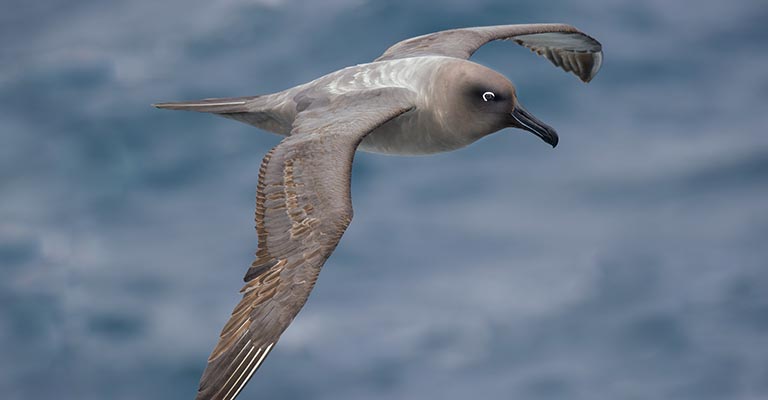
The Light-mantled Albatross is a captivating seabird with various fascinating traits and behaviors. Here are five fun facts about this remarkable species:
Elegant Flyers
Light-mantled Albatrosses are renowned for their graceful flight, effortlessly gliding over the ocean waves for thousands of miles without flapping their wings.
Their streamlined bodies and long wingspan enable them to soar incredibly efficiently, making them masters of the air.
Long-Distance Travelers
These albatrosses are among the most wide-ranging seabirds, traversing vast stretches of the Southern Ocean in search of food.
Some individuals have been known to travel over 120,000 kilometers (around 75,000 miles) in a year, undertaking epic migrations spanning entire ocean basins.
Social Nesting
Light-mantled Albatrosses nest in colonies, often alongside other seabird species such as petrels and shearwaters.
This social nesting behavior protects from predators and fosters community among breeding pairs, who engage in elaborate courtship displays and mutual grooming rituals.
Monogamous Bonds
Once paired, Light-mantled Albatrosses form strong monogamous bonds lasting many years, if not for life.
They demonstrate remarkable loyalty to their partners, returning to the same nesting sites year after year to breed and raise their young together.
Vocal Communicators
While primarily silent at sea, Light-mantled Albatrosses are vocal communicators at their breeding colonies.
They produce a variety of calls, including honks, whistles, and brays, which play a crucial role in pair bonding, territory defense, and chick recognition within the colony.
These fun facts offer a glimpse into the fascinating lives of Light-mantled Albatrosses, showcasing their remarkable adaptations, behaviors, and social dynamics in the wild.
Wrapping Up
The Light-mantled Albatross is a captivating and iconic seabird species with many adaptations and behaviors.
From its elegant flight and long-distance migrations to its social nesting habits and monogamous bonds, this bird exemplifies the beauty and resilience of nature in the remote reaches of the Southern Ocean.
Appreciating the life history and characteristics of the Light-mantled Albatross deepens our connection to the natural world. It underscores the importance of conservation efforts to protect this majestic species and its fragile marine habitat. Thank you very much.